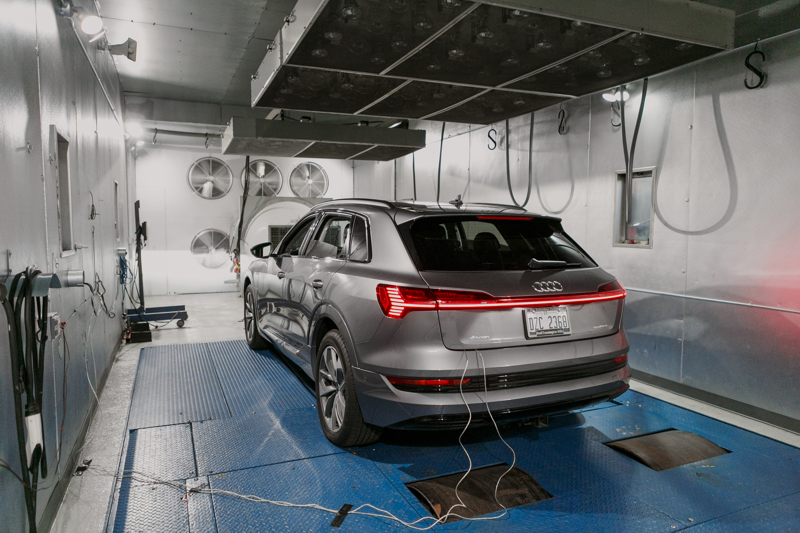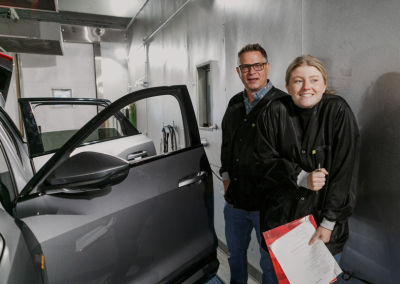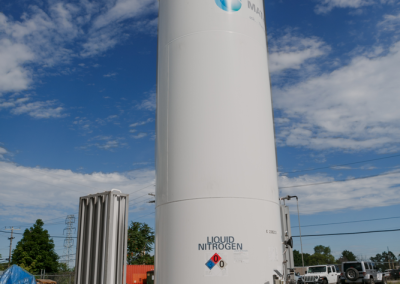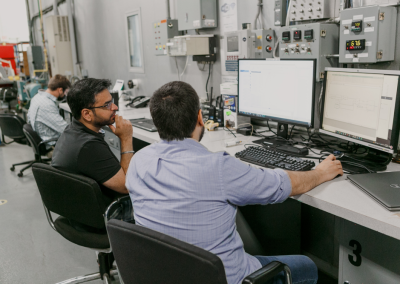Thermal and Climatic Testing Services
The Importance of Thermal
and Climatic Testing
- Ensure Reliability & Safety
- Optimize Performance
- Meet Regulatory Requirements
- Reduce Development Time & Costs
- Validate New Technologies
- Prove Durability in
Real-World Conditions - Reduce Warranty Costs


Climatic Testing
Simulating a wide range of environmental conditions (temperature, humidity, sunlight) to assess vehicle performance and durability under different climates.

Component Testing:
Evaluating the thermal performance of specific components like batteries, heat
exchangers, engines, and HVAC systems.

Thermal Cycling
Exposing components or vehicles to rapid repeated cycles of high and low temperatures (Thermal Shock Testing) to assess their resistance to thermal stress and potential material fatigue.

Battery Testing
Specifically focusing on the thermal performance and safety of EV batteries, including endurance testing under various temperatures, and hot/cold charging evaluations range studies.

Durability Testing
Evaluating the long-term reliability and lifespan of components, paints, self-stick
emblems, etc. under thermal stress.

Engine Testing
Assessing ICE/EV engine performance and efficiency under different temperatures.
Thermal and Climatic Testing Cells for Vehicles, Powertrains and Components
A Message for Our Valued Customers
At EDP Climatic Testing, we help our innovative
customers power the future of transportation and
make driving safe and comfortable by simulating
climatic conditions for your testing needs. These
conditions assist with the development and validation
of complete driving and interior systems for both
internal combustion and electric vehicles. We help our
customers develop their thermal management systems,
covering individual components like batteries, heat
exchangers, HVAC and engines to entire vehicle
systems. Our affordable and modern test facility
features three different size thermal and climatic test
cells to match your testing requirements.
Please contact us at info@edpcompany.com or
734-260-1419 for test cell availability so we can
provide you a comprehensive quotation.
Vehicle Test Chamber
- Temperature range of -40°F to 170°F
- Passenger vehicles through most heavy trucks
- 2WD & AWD Chassis Dynamometer
44’0″ deep x 14’8″ wide x 13’8″ high interior; 10’0” x 10’0” door - Cooling capacity up to 1.2 million BTUs per hour
- Heating capacity up to 200,000 BTUs per hour
- Full solar adjustable position simulation with 1400 watts / m²
full spectrum light, 1000 watts/m² infrared - Load wind simulation up to 60 mph that can be synchronized
to vehicle speed - 600 CFM refrigerated, 0% humidity make-up air
- Instrumentation panels with multiple thermocouple, coaxial,
and high voltage/ current channels - Driver’s trace display
- Safety first with continuous air quality monitoring and
warning systems
AWD Chassis Dynamometer
- 400-hp peak absorption AWD mode
- 400-hp peak absorption 2WD mode
- Compatible with wheelbases of 104″ – 135″
- Air-cooled eddy current power absorber
- 200 mph maximum speed
Engine Test Chamber
- Temperature range of -40°F to 170°F
- Up to two engines on water brake
dynamometers (32°F minimum temperature) - 19’4” deep x 13’5″ wide x 7’9″ high interior
- Cooling capacity up to 310,000 BTUs per hour
- Heating capacity up to 100,000 BTUs per hour
Component Test Chamber
- Temperature range of-150°F to 650°F
- Mechanical, electrical, temperature and humidity testing
- 3’0″ deep x 3’0″ wide x 3’0″ high interior
- Instrumentation port






